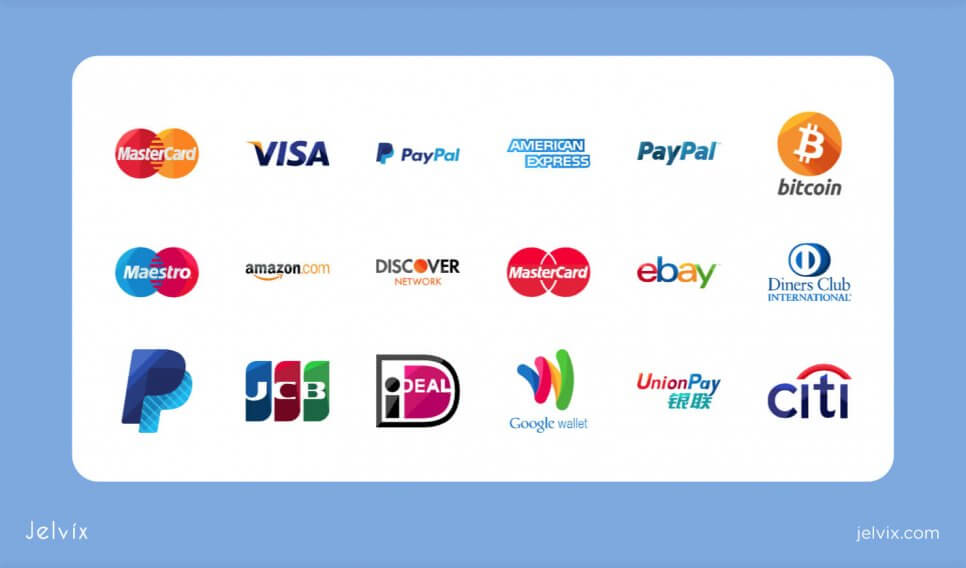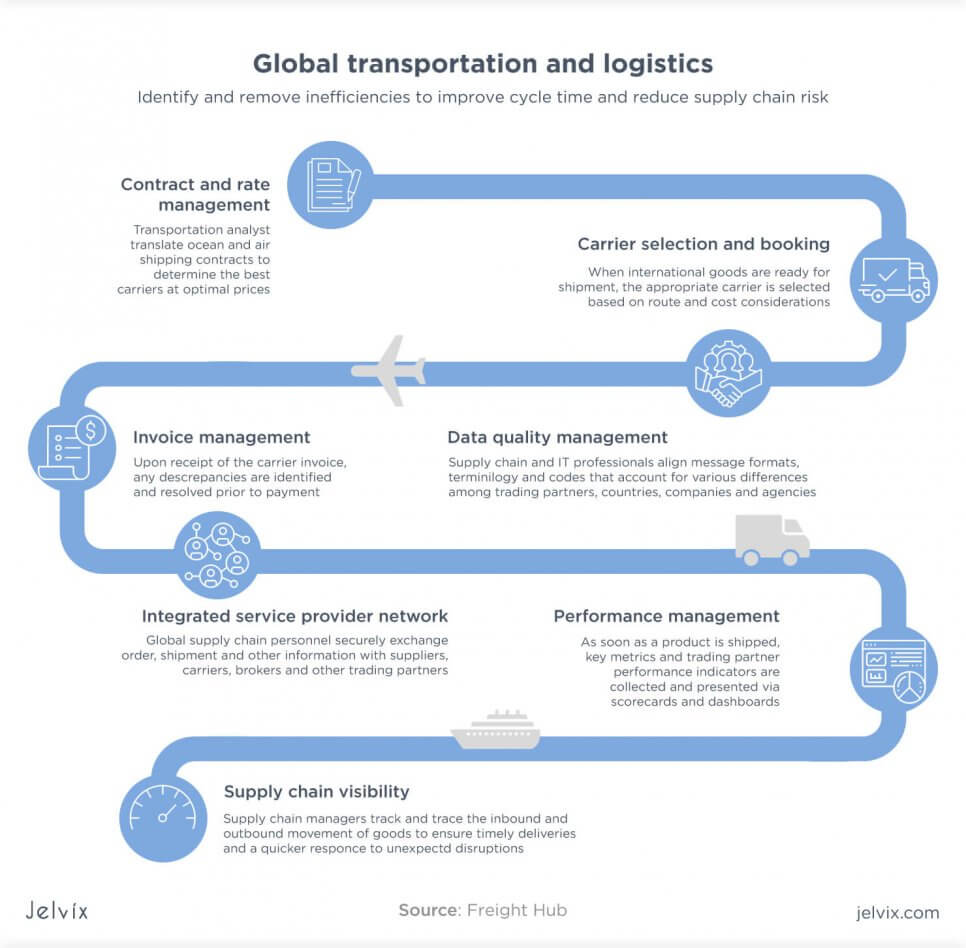The current international business system will be completely different by 2025. Gaps between the corresponding economic wealth and national power of developed and poor countries will continue narrowing down exponentially. This is due to the growth of emerging powers, a historic transfer of economic power from West to East, and the increasing impact of non-state actors.
Globalization and the transfer of global economic power signal to thriving multinationals, micro-enterprises, and everything between to establish a global expansion strategy. Expansion for enterprises to a global scale implies their entry into the international consumer market. This article will break down how companies looking to expand globally can successfully lead an international business expansion.
What is a global expansion strategy?
Companies that successfully go international are those that establish bona-fide business plans for entering a global market to develop a profitable market share. Such plans, when drafted properly, allow for the best use of resources and the mitigation of risks.
The overseas business plan includes seven elements, namely:
- internal business audit
- competitive analysis
- market analysis
- marketing strategy
- localized infrastructure plan
- top-down budget, and a timeline.
Internal business audits help the organizations get increased knowledge of their capabilities, growth areas, and competitive advantage. They include a SWOT analysis that ensures product offerings are ready for the international market.
On the other hand, a competitive analysis compares the operations and business offerings of the organisation against industry competition in the target market.
A market analysis is a research on the overseas target market. These research areas include market size, growth potential, consumer attitudes, and the state of the economy.
A marketing strategy includes establishing a brand position, marketing tools, product delivery, key performance areas, and pricing evaluations according to the overseas market economic environment.
A localized infrastructure plan outlines the methods to set-up compliance features. Infrastructure plans include recruiting internationally, sourcing local suppliers, and establishing legal status.
A top-down budget begins with six to twelve months and expands to a three-year period thereafter. It is aligned with the business plan and monitored on a monthly basis.
Lastly, a timeline made-up of feasible commitment dates maps that the entire expansion is initiated.
Why do businesses expand overseas?
A recent survey suggests that 96% of small businesses are confident about conducting business abroad. It shows that companies with long-term objectives will ultimately strive to serve beyond their current limits. As the beginning of the 2020’s witnesses an already globalized commercial world, overseas expansion is quite reasonable as well as making it an important strategic goal.
Although numerous opportunities exist around the globe for different sectors to profit from, international growth for its own sake can be dangerous irrespective of whether expanding to developed or emerging markets. It is, therefore, important for firms to compose detailed drafts of their reasons for going international.
The main opportunities companies get when entering the global marketplace through international expansion are:
- To operate in markets with counter-cyclical fluctuations that offset the fluctuations from seasonal changes
- To extend the sales life-cycle of present products and services
- To diversify the customer base and improve the potential for expansion
- To take advantage of unique circumstances that present an opportunity to expand
- To have reduced overheads from nearness to raw materials through lower labor and transportation costs
- To reduce dependence on the markets already developed
- To take advantage of corporate technology
- To find new talent or fill talent gaps
- To learn the best way to compete abroad
- To fulfill an already determined expansion plan
Factors to take into consideration before expanding globally
There are three main factors that a company, aiming to expand internationally, must take into consideration before operating overseas. The first factor refers to how ready the organisation is to operate abroad. The second factor is the many challenges that come with overseas expansion. Finally, the third one is the tips on overcoming these challenges and how they fit with the organisation’s capabilities.
Factor #1: Are you ready?
Management must answer positively to some questions on how ready they are for the expansion.
- Whether the firm is indeed suited to thrive internationally and whether or not expansion is actually beneficial. The organisation must evaluate how well their product or service will be successful in the targeted country so that resources are not taken away from more profitable opportunities.
- Whether the firm is financially able to sustain itself and expand. Management must evaluate whether they possess the finances to support the original investment and maintain the forecasted growth.
- Whether there is customer demand and if the product offering will sell well. It is important for management to perform research on whether profitable customers exist in the new market and if they have a need for the organisation’s offering. Without satisfied customers, there will be an inadequate revenue stream, which will lead to significant losses.
- Whether the firm can, in fact, build the target market internationally and if the ideal customer base is familiar with their products or services. If not, management must look to invest time and money in educating consumers.
- Whether the infrastructure of the target country and their ease of doing business statistics are consistent with the organisation’s scope of business activities. From energy and transportation to tariffs and government support, it is important that the resources available in the target country are in line with the resources needed by the business for day to day operations.
If the business answers positively to all five questions, they are in a better position to consider expanding internationally.
Factor #2: Do you understand the challenges that come from international expansion?
Today’s global marketplace is more globalized and accessible than ever before. This fact has exponentially increased the risks involved in doing business abroad. As a result, international expansion requires balancing numerous challenges at a time. It is, therefore, crucial to understand the challenges and consider them before going ahead with the expansion. They include:
Exchange rates
Exchange rate fluctuations are one of the most demanding international operating challenges to encounter. They can have a significant impact on the balance of business costs and profits. Keeping an eye on exchange rates must be a focal part of the strategy for firms going international.
Payment methods
Payment methods vary from country to country, especially where financial systems differ. Furthermore, local offline payment solutions in the target country may lead to large time delays and high-interest rates from bank transactions. It is also important to make acceptable payment methods and secure processes when seeking to trade internationally.
Cost calculation
As with all businesses, it is important for costs to successfully compete while earning a profit. Therefore, cost margins, as well as the operational costs, should be accounted for when operating internationally. Foreign exchange fluctuations between the home and target countries may also play a role in determining whether prices are high or low, increasing or decreasing in the target country.
Pricing strategies
Local norms, brand positioning, pricing policies, economic factors, competition, and exchange rates all contribute to the pricing strategies in the overseas market. For example, if a developed nation with a stronger exchange rate is the home country and a low-income nation with low purchasing power among consumers is the target country, a product that sells at a medium-range price at home might be considered to be luxury-priced in the target country. With lower costs of production in a low-income country, the same product might have to be priced cheaper.
Foreign laws and regulations
Jurisdictional regulations often vary considerably between locale. Many countries have regulatory proceedings regarding setting up, opening local bank accounts, maintaining corporate records, and so on. Therefore, a full review of all relevant local statutes, tax regulations, and trading requirements must be conducted. Failure to comply can lead to financial penalties and lost goodwill.
Political risks
An unstable political situation in the target country and religious tensions contribute to high political risks. Risk tolerance should remain a key consideration for firms eyeing global expansion.
Supply chain complexity
Supply and supply chain management is lengthy and complex when it comes to sourcing from overseas. International firms are often exposed to a large number of intermediaries between the place of dispatch and the place of destination. It increases the risks of costly storage and transportation but also exposes the probability of forgery.
Human resources
When expanding internationally, it is important to consider how the human resource requirements for operating abroad will be met. A new team have to be recruited locally, or existing team members might stay on board. Hiring new locals will require further investments as will working with existing staff. If existing team members will be sent to new global markets, it is important to account for the vacancy that they will leave behind, their living expenses, accommodation, and work permits.
International company structure
Before reaching the international level, management should decide whether to set up production locally or outsource production by conducting international delivery. Management should also decide if the company will be run centrally or locally. To run the company from a central location is to situate management in the organisation’s headquarters. On the other hand, to run it locally is to have key decision-makers on-ground at their different markets.
Communication difficulties
Companies looking to go global might face both internal and external communication difficulties. Depending on the target country of choice, the external communication difficulties likely to affect the organisation stem from language barriers and cultural differences. Verbal communication, non-verbal communication, emailing styles, and symbolism are also should be taken into account.
On the other hand, communication difficulties within the organisation include untimely feedback to management on the progress of the international expansion. This issue can be caused by poor communication skills or time zone variations. Such lack of communication often leads to decisions made without having the necessary data to back them up.
Logistics and shipment methods
The most difficult task for retailers willing to take advantage of online sales from abroad is finding fast, reliable and cost-effective distribution methods. The shipping method chosen can be an influential factor in revenue and can also be a hindering factor to the most suitable selection of products for overseas sales.
Other considerations to address according to the firm’s offerings and target markets include customs fees, the cost of storage, and local methods of distribution.
Labelling and Packaging
Packaging standards differ between countries. Businesses expanding overseas must localize their products in terms of having new packaging with local language instructions on labels. In multilingual regions like Europe, instructions for every product will be in multiple languages. Beyond the legal perspective, establishing environmentally conscious packaging practices can attract new, forward-thinking consumers.
Factor #3: Are the tips on overcoming these challenges helpful?
Upon analysing the challenges that an international expansion might introduce, it is important to weigh out as many tips on overcoming the challenges as possible. In doing so, only the appropriate measures that fit with the organisation’s capabilities can be put into practice. This ensures that the tips shared are helpful and practical. Tips on overcoming the challenges above include:
Be willing to change direction
Adapt to circumstances by changing how you operate in some ways. For example, adapt your products and customer support systems to meet changing consumer demand. Pay attention to how the local specifics and nuances could impact your operations.
Think big
Do not be limited by your geography on how big you think, or how far you can expand your business. The trick to recognizing and adapting global complexities from the start is to take the time to invest in infrastructure and localize your approach.
Localize your launch
The trick to localizing your approach to fit the business climate and culture of your target market is to meet potential customers where they are. It includes communicating in the language they speak, receiving education on local customs, and hiring local support for assistance during each preparation stage.
Rely on experts
Rely on experts and business services for guidance at the beginning. It can be done through outsourcing back-office operations and aids in easily scaling up in a competitive, cost-effective way. Using local outsourcers, professional services firms, and consultancies is an essential time-saver in the early phases of expansion.
Organize communication
You need to have an effective system and set of protocols in place for communicating, reporting, and tracking your globalization efforts. This way, company leadership can keep tabs on what is going on with your international expansion.
Master global marketing
Learning the best way to reach your prospective customers is a crucial element of taking your business global. Doing so, you can establish the loyal customer base necessary to scale your business.
Create a metric workflow
Assign clear, quantitative goals to each international expansion stage. Begin measuring those goals immediately, then undergo continual reviews to evaluate all progress. It will minimize resource costs and provide data-back answers to inevitable process hiccups or culture shock.
Find the right partners and team
Set up a local office and recruit an experienced, reliable global expansion team that understands the market and language. In such a way, you ensure that you comply with local regulations, handle expenses efficiently, and meaningfully communicate the firm’s competitive advantage.
Have the right infrastructure
Establish which operations can be performed on a local level and which need to be done centrally. Set up IT and telephone systems for employees to share data according to best practices.
Read more about the most common software development strategies and take a look at their benefits and drawbacks.
How can a company expand internationally?
Having established the reasons for international business expansion, let’s summarise the twenty steps to going global:
Step 1: Performing due diligence to understand the full impact of the international expansion
Step 2: Preparing an international business plan to evaluate needs and identify goals
Step 3: Conducting foreign market research and identifying the international target market
Step 4: Establishing the financial infrastructure, building relationships with local banks, and sourcing for funding
Step 5: Beginning the recruiting process for the permanent leadership team
Step 6: Translating product names in the local language and ensuring they are not offensive
Step 7: Obtaining compliance and certifications where applicable
Step 8: Initiating patent, trademark, and intellectual property reviews
Step 9: Developing policies, procedures, and handbooks that comply with local requirements while maintaining balance with overall company policies
Step 10: Developing a suitable information technology infrastructure
Step 11: Developing a detailed marketing plan and Key Performance Indicators
Step 12: Determining the appropriate pricing model, sales methodology and optimum sales model
Step 13: Evaluating and selecting methods of distributing products overseas
Step 14: Packaging and labelling products in accordance with local regulations
Step 15: Creating localized commercial agreements
Step 16: Performing general corporate services such as dispute resolution, immigration filings, customs payments, and shipping
Step 17: Maintaining corporate records and reports
Step 18: Establishing a real-time budget and making adjustments
Step 19: Negotiating alliances and partnership programs to create close relationships with local businesses
Step 20: Launching the products/services in the target international market
Conclusion
Expansion for enterprises to a global scale implies their entry into the international consumer market. For firms to take advantage of broader opportunities, it is essential to go global. Alongside this, other reasons businesses expand overseas are to reduce dependence on the markets already developed and to exploit corporate technology and know-how.
Before expanding internationally, businesses must conduct a thorough analysis of the market, evaluate the challenges and risks, and build a global expansion strategy.
Here at Jelvix, we would love to hear from you and collaborate on bringing your expansion strategy to life.
Need help with a feature list?
Lorem ipsum dolor sit amet, consectetur adipiscing elit. Aenean porta, ante dignissim dapibus faucibus, magna nisi mattis erat.


















